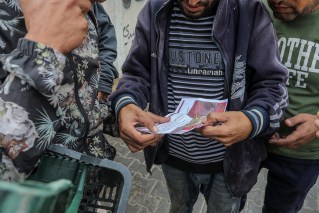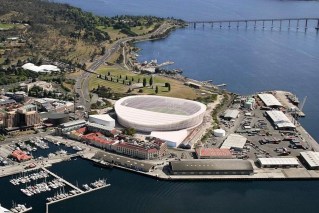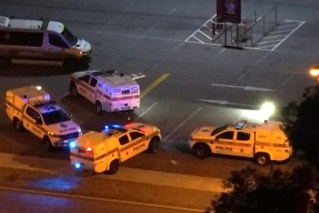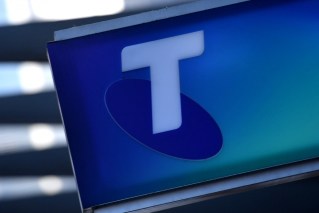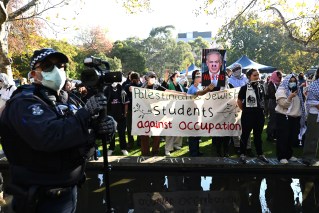At least six people are confirmed dead after a powerful earthquake struck central Japan, destroying buildings and knocking out power to tens of thousands of homes.
The quake with a preliminary magnitude of 7.6 struck in the middle of the afternoon on Monday, prompting residents in some coastal areas to flee to higher ground.
It also triggered waves about a metre high along Japan’s long western seaboard as well as in neighbouring South Korea.
Army personnel were dispatched to help with rescue operations, while one local airport was closed after the tremor tore open cracks in the runway.
A man was pronounced dead after a building collapse at Shika Town in Ishikawa prefecture, broadcaster NTV reported citing local police.
Kyodo News reported four deaths in Ishikawa, citing the Prefectural Crisis Management Team, including a man and woman in their 50s, a young boy, and a man in his 70s.
The Asahi newspaper cited police as saying a man in his 90s had been pulled from the wreckage of a building and taken to hospital but confirmed dead.
Local media footage from the prefecture showed a building collapsing in a plume of dust in the city of Suzu and a huge crack in a road in Wajima where panicked-looking parents clutched their children.
One witness on social media platform X posted footage of the Keta Grand Shrine near the coast in Hakui rocking in the quake as a crowd of visitors watched.
“It’s swaying,” she says. “This is scary!”
Millions of Japanese traditionally visit shrines and temples on January 1 to mark the start of the new year.
Tweet from @inaya_bisma
In nearby Kanazawa, a popular tourist destination, images showed the remnants of a shattered stone gate strewn at the entrance of another shrine as anxious worshippers looked on.
The tremor was also felt in the mountains of neighbouring Nagano prefecture.
“The snow from the electric wire [came] down, and also from the roof it fell down and all the cars are shaking, and so everybody was panicked,” Jonny Wu, a Taiwanese tourist visiting Nagano for a skiing holiday, told Reuters.
More strong quakes in the region, where seismic activity has been simmering for more than three years, could occur in coming days, JMA official Toshihiro Shimoyama said.
Russia and North Korea also issued tsunami warnings for some areas.
Japanese Prime Minister Fumio Kishida said late on Monday that it was proving difficult for search and rescue teams to reach the worst affected areas due to blocked roads.
President Joe Biden said in a statement that the US was ready to provide any necessary help to Japan.
“As close allies, the United States and Japan share a deep bond of friendship that unites our people. Our thoughts are with the Japanese people during this difficult time,” he said.
The Japanese government said that as of Monday night it had ordered more than 97,000 people in nine prefectures on the western coast of main island Honshu to evacuate.
They were to spend the night in sports halls and school gymnasiums, commonly used as evacuation centres in emergencies.
Kanazawa resident Ayako Daikai said she had left her home to go to a nearby primary school with her husband and two children soon after the earthquake hit.
Classrooms, stairwells, hallways and the gymnasium were all packed with people, she said.
“We haven’t decided when to return home yet,” she told Reuters when contacted by telephone.
Almost 33,000 households remained without power in Ishikawa prefecture early on Tuesday morning, according to Hokuriku Electric Power’s website.
Japanese Prime Minister Fumio Kishida said late on Monday that he had instructed search and rescue teams to do everything possible to save lives even though access to quake-hit areas was difficult because of blocked roads.
The Imperial Household Agency said that following the disaster it would cancel Emperor Naruhito and Empress Masako’s slated New Year appearance on Tuesday.
The quake came at a sensitive time for Japan’s nuclear industry, which has faced fierce opposition from some locals since the 2011 earthquake and tsunami that triggered nuclear meltdowns in Fukushima.
Japan last week lifted an operational ban imposed on the world’s biggest nuclear plant, Kashiwazaki-Kariwa, which has been offline since the 2011 tsunami.
The Nuclear Regulation Authority said no irregularities had been confirmed at nuclear plants along the Sea of Japan, including five active reactors at Kansai Electric Power’s Ohi and Takahama plants in Fukui Prefecture.
Hokuriku’s Shika plant in Ishikawa, the closest nuclear power station to the epicentre, had already halted its two reactors before the quake for regular inspections. It registered no effect from the quake, the agency said.
-with AAP



